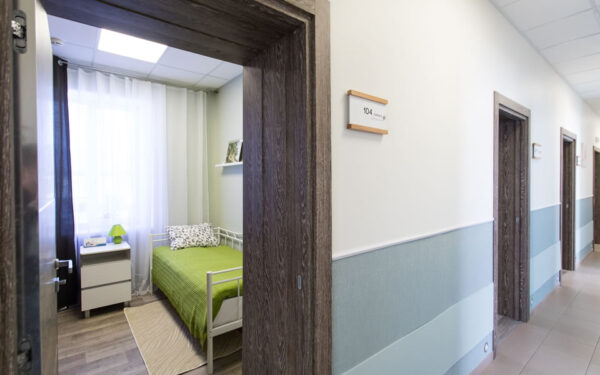Transitioning Leadership in Long Term Care
In football, the transfer of leadership from seasoned veterans to emerging talents is not just a change of guards but a strategic maneuver ensuring the team’s longevity and success. This concept mirrors the critical importance of succession planning in long-term care, where the sustainability of care facilities hinges on the seamless leadership transition. The article outlines pivotal considerations such as succession planning, talent development, and maintaining cultural integrity, providing a blueprint for organizations to cultivate the next generation of leaders while remaining adaptable and prepared for any challenges that may arise.
Background
My interest in the 2023 Football season ended abruptly on Saturday night, January 20th, with the 24-21 victory by the San Francisco 49ers over the Green Bay Packers. Despite being led by an inexperienced Jordan Love as Quarterback, the Packers’ overall successful season got me thinking about how vital leadership transitioning is in sports and life, especially in long-term care.
Here’s a little background for the non-football fans out there: The quarterback and team leader for the Green Bay Packers from 2008 to the end of 2022 was future Hall of Famer Aaron Rodgers. Before that, Brett Favre was the Packers quarterback from 1992 through 2008. When the Packers drafted Aaron Rodgers in 2005, he did not get his chance to start until 2008, when Brett Favre left to play for the Jets (sound familiar). During this three-year period, Mr. Rodgers rarely played in a regular season game. He was mentored and learned the tricks of the trade from Brett, which helped translate to success when he reached the playoffs by the end of his second year as the leader of the team.
In 2023, history seems to have repeated itself for the team as they transitioned the quarterback position to Jordan Love, who was drafted by the Packers in 2020. He only started one game and saw limited playing time over the next two years. However, like his predecessor, Mr. Love spent his time watching and learning from the current starting quarterback, Aaron Rodgers, and the result was a successful year, not only reaching the playoffs but advancing to the second round with Jordan despite his very limited professional experience as a starting quarterback in the NFL.
If the commonly used quote “sports is a metaphor for life” holds true, then just like the Green Bay Packers successfully transferred leadership to a new generation for their sports team, successfully transitioning leadership to the next generation in long-term care is a critical process that ensures the sustainability and continued success of care facilities. This process is not merely about replacing one leader with another; it involves strategic planning, cultivating new leaders, and ensuring that the organization’s mission and values persist through changes in management. Here are some key considerations and steps for a smooth leadership transition in long-term care:
1. Succession Planning
Creating a succession plan is vital for a seamless transition. In football, this process usually involves an intensive process of identifying and investigating potential candidates from college or current professionals on other teams well before the time comes to replace them due to an erosion of skills.
In long-term care, this plan should identify potential leaders within the organization, define the competencies and experiences required for leadership roles, and outline a timeline for the transition process.
2. Talent Development
In long-term care as well as sports, there is a need to invest in the professional development of emerging leaders. Effective professional development will provide them with the training, mentorship, and opportunities they need to grow their skills and understand the complexities of the long-term care industry.
3. Inter-generational Collaboration
Another part of the transition is to foster a culture of collaboration between current and future leaders. Encourage knowledge sharing and mentorship, allowing the next generation to benefit from the experience and wisdom of established leaders while also bringing new ideas and perspectives to the table. Anyone who follows successful sports teams over decades will know that collaboration between current and future leaders is an absolute must to achieve prolonged success.
4. Communication
Communicating with all involved parties, internal as well as external to the healthcare organization, is critical to maintaining open and transparent communication. Stakeholders, including staff, residents, and their families, should be informed about leadership changes and what it means for the facility.
5. Cultural Continuity
It is important to ensure that the core values and mission of the organization are upheld. The next generation of leaders should be aligned with these values and prepared to carry them forward, even if the new leaders have different skill sets and abilities than the outgoing leaders.
6. Gradual Transition
A phased approach to leadership transition should be considered, where responsibilities are gradually shifted to new leaders. This allows for a period of overlap where outgoing leaders can guide and support their successors. For proof, one only has to look at the failures of sports teams who have thrown a highly touted yet completely inexperienced player in a situation where there has been no guidance or support from a predecessor.
7. Addressing Resistance
The healthcare organization may experience resistance from current employees and players. These concerns can be met head-on by involving staff and residents in the transition process and demonstrating the benefits of new leadership approaches.
8. Leveraging Technology
Embrace technological advancements that can aid in the transition. Use project management software, virtual meeting tools, and other digital resources to streamline the process and keep everyone connected.
9. Evaluating Organizational Structure
It may be prudent to review and revise the organizational structure to ensure it supports new leadership and adapts to the evolving landscape of long-term care or any viable industry.
10. Planning for the Unexpected
Finally, sometimes draft picks or new hires do not perform as well as expected. Therefore, it is vital to have a contingency plan in place should unforeseen events disrupt the transition process. Flexibility and adaptability are crucial during times of change.
Conclusion
The transition of leadership to the next generation, whether a sports team or a long-term care facility, is an intricate process that requires careful planning and execution. By focusing on the ten key considerations listed above, long-term care facilities can ensure that they continue to provide high-quality care and meet the needs of their residents well into the future. The involvement of all stakeholders and transparent communication will further facilitate a smooth transition, ultimately benefiting the entire long-term care community.
Please contact a Marcum Healthcare Advisor with any questions.









